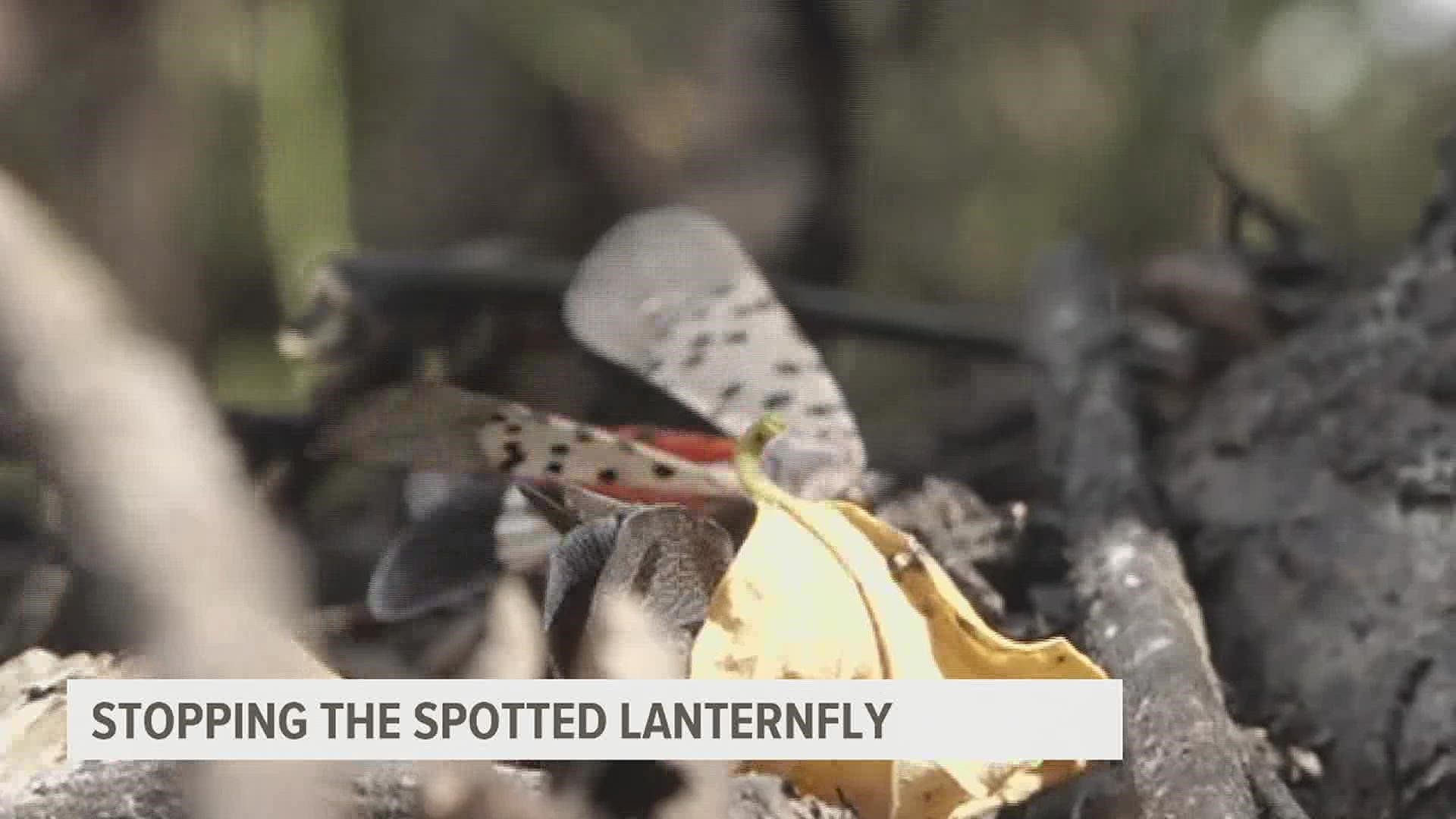ADAMS COUNTY, Pa. — Note: The video is from October 2021.
The Pennsylvania Department of Agriculture announced Friday it is adding 11 counties to the commonwealth's spotted lanternfly quarantine zone.
Adams County in Central Pennsylvania is one of the 11 new entries on the list, which now includes 45 of the commonwealth's 67 counties, according to Agriculture Secretary Russell Redding.
The other new additions are Armstrong, Bedford, Centre, Fulton, Indiana, Lycoming, Mercer, Snyder, Union, and Washington counties.
Cumberland, Dauphin, Franklin, Juniata, Lancaster, Lebanon, Mifflin, Perry, and York counties are already on the list.
“Spotted lanternflies threaten outdoor businesses and quality of life as well as grapes and other valuable crops Pennsylvania’s economy depends on,” Redding said. “It’s up to every Pennsylvanian to be on the lookout for these bad bugs. Walk your yard, gardens, or land before spring hatch and scrape egg masses. Kill every bug. Check your vehicles before traveling to ensure you’re not transporting them to a new area for new opportunities to devastate crops and outdoor quality of life.”
Adult lanternflies do not survive the winter months. However last season’s insects have laid eggs on any outdoor surface in masses of 30-60 eggs, each covered with a mud- or putty-like protective coating. Finding and destroying egg masses now will prevent their hatch and reduce their spread this season, the Dept. of Agriculture said.
In the seven seasons since lanternflies were first discovered in the U.S., research funded by the department, the USDA and private industry, has advanced our understanding of the insect and how to safely control it in our climate and habitat.
To learn how to recognize the insect and its eggs, how to separate common myths from facts, and how to safely control it on your property, visit Penn State Extension’s website, extension.psu.edu/spotted-lanternfly or contact your local PSU Extension office.
Known lanternfly infestations are not widespread in the newly quarantined counties, but in scattered municipalities shown on the department’s detailed online map, Redding said.
When the department receives reports of lanternflies in new areas, inspectors confirm the presence of the insect, then survey the area to determine whether it was an isolated insect or a more extensive population. Working with property owners, inspectors treat areas that pose a high risk of spreading the insect, such as high-traffic businesses, tourist attractions and transport centers.
The quarantine strictly prohibits the movement of any spotted lanternfly living stage including egg masses, nymphs, and adults, and regulates the movement of articles that may harbor the insect.
Businesses that operate in or travel through quarantined counties are required to obtain a Spotted Lanternfly permit. The permit is designed to educate business travelers -- regardless of their industry and whether or not they transport goods – to recognize spotted lanternflies and know how to keep from giving them a ride to a new area. More than 20,000 companies throughout the U.S. and Canada have gotten permits, representing more than 1.2 million of their employees who are doing their part to stop the spread of the invasive insect.
For more information on spotted lanternflies, visit agriculture.pa.gov/spottedlanternfly.

